Since the last Penguin 4.0 (Real-time) update, lots of things have changed in terms of quality backlinks. Bad backlinks have remained the same, though, even if they were created some time ago with no intent to harm a website, or there was an arranged negative SEO attack or maybe a spammy link building campaign, with the purpose to rank high & fast. We’ve tackled this matter before, yet, we felt the need of updating this topic for 2018.
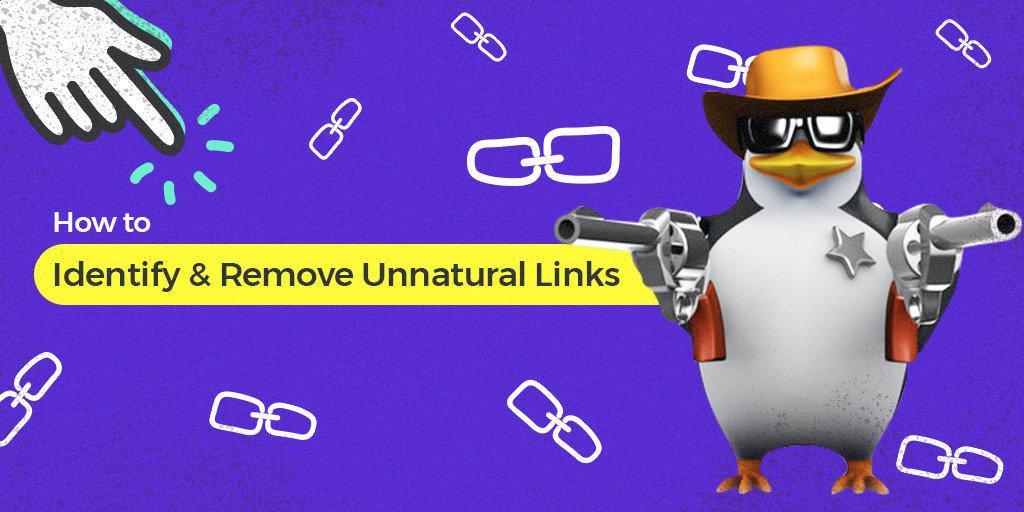
Toxic links have a higher effect on a website now than they ever had before. They can eat your whole website alive and stick it down, in the last pages of SERP. How, you might ask? Well, Google Penalites caused by unnatural links coming from:
- Link Networks
- Footer Links
- Blogrolls & Other Blocks of Links
- Site-Wide Links
- Blog Comments
- Forum Profile Links & Signatures
- Web Directory Links
- Article Directory Links
- Anchor Text Distribution
To be prepared for the long ride and have a clean website, you should know that it requires two easy steps for a correct backlinks assessment. First, identify toxic backlinks and then remove bad backlinks. Some of the most known types of low-quality links are presented below. We thought on them through a guide to help you easily identify the unnatural links (link networks and low-quality links) that, maybe, caused the drop in your rankings. After that, you are served with tips and recommendations to clean your website of those links.
The SEO world has evolved so much in the past few years, which means the quality guidelines have become more strict. Links started to become somehow a problem, because of the amount of spam on the web. After reading this post, you will be able to identify low-quality links that hurt your rankings.
How to Remove Bad Backlinks
The steps for a clean website are simple. First, you need to identify the most damaging referring domains that are linking to your website, following the black hat links filtering explained below, and then remove and disavow the unnatural links.
Here are 4 steps to remove bad backlinks for your website:
- Identify your bad links (you’ll find how exactly from this article).
- Search for the contact information of the website you have the link on.
- Contact the webmaster asking him to remove the link. If you don’t get a response in within 2 weeks, go to the next step.
- Disavow the links and upload the file to Google.
Disavowing all the bad links doesn’t have to be a chore. In cognitiveSEO you have to use the Unnatural Detection which it is a helpful buddy. It will save you tons of time, energy and money. Below you can see a screenshot from the tool.

You have to click on the unnatural link bar chart and a new window will all the spammy links will pop-up instantly:
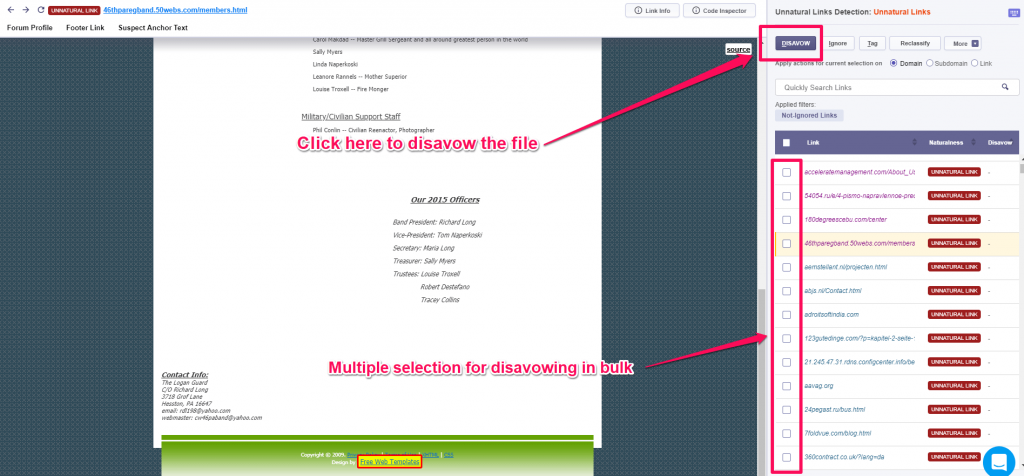
You have to select the links that are bad and disavow them. Either you do that individually or perform bulk actions. All those disavowed links will be gathered in a file-format agreed by Google, which you can download and send it from the tool directly to Google.

The disavowing process applies to all category of links explained below.
1. Link Networks
Over 90% of the Link Networks are easy to spot, both by the human eye and by the Google algorithm.
Most Link Networks have the following common patterns:
- Architected from blogs and forums, because they are easy to automate and replicate.
- Links try to look as natural as possible by being put inside the content of a blog post or forum thread.
- The owner of a link network rarely makes the effort to generate links back to each of the generated blog posts. This means that each and every post has a probability of having 0 or a small number of backlinks pointing to them.
- Each site from the link network links out to at least 2 common money sites.
To find the links coming to your website from link networks you need to filter down the backlinks by blog posts and forum thread links, that are positioned in content and have a low metric (link influence, domain influence) and a low number of incoming links to the actual backlink. The hardest part is to filter large lists of links by the tag in Content and type of link (blog post, forum page etc). You can either do it by hand or use a tool that has the ability to make these classifications.
Health Plan to Quickly Identify Backlinks Coming from Link Networks
By using cognitiveSEO, and applying a couple of filters, you can easily find those links exactly.
Order descending by Link influence to see the lowest quality pages first. Browse a bit through the links and use the link preview feature to quickly preview those pages. In our case we found 316 low-quality links coming from different pages on various link networks. (17% of their entire backlink profile)
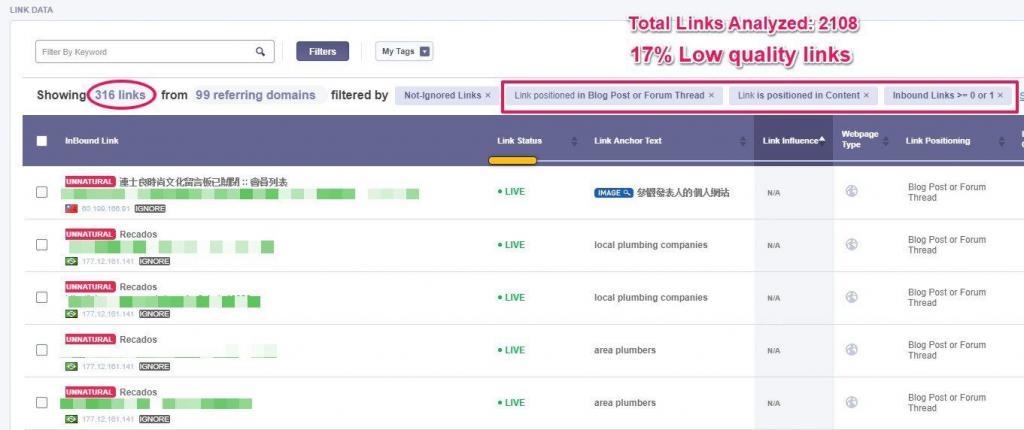
To remove bad links, such as link networks, you should know something first.
Any of the following types of links can be both natural or artificial. The difference is how they were acquired in terms of link velocity and link distribution over the entire backlink profile of a site.
To identify if your backlink profile is unnatural, you should always compare your site to your competitors’ and check for major discrepancies between the backlink profiles of those sites. I usually compare my site with the top 5 leaders in the industry and then compare my site with 5 other sites that are trying to break into the niche. There are always things that come up when doing such an in-depth analysis.
You should compare metric distributions, such as link and/or domain influence, link and/or domain trust flow, link and/or domain citation flow. These are only the basic comparisons that you can make. The more advanced ones are when you start to compare links classified by webpage type, link type, in content versus not in content links, link position and so on.
2. Footer Links
Footer links were totally legit 6 years ago, but they started to make a lot of mess because of websites who abused of this technique.
That’s one of the reasons why Google placed site-wide links into the link schemes list. Those links can distort your analysis and do not present any value from an SEO point of view. Imagine if you have one link from one domain compared with 100 links from the same domain. First of all, the value of that single-domain-link is higher than each individual link coming from the same domain.
There was a question on the same issue on the Google Webmaster help forum:
Are sitewide backlinks considered good or bad by Google? Or do they just count as 1 link from the whole domain?
Matt Cutts answered very clearly:
| From an algorithmic point of view, at some point, it becomes asymptotically diminishing returns. And it doesn’t help you anymore. | |
 |
Matt Cutts |
| Former head of the webspam team at Google | |
If they see a link form a domain they will count it as one, and if they see multiple links from the same domain, they might still count them as one.
From the manual point of view, you will receive a penalty, because Google doesn’t trust those links and performs manual actions quite often.
In case you have a high number of footer links, you will definitely raise a red flag to Google. Usually, footer links are acquired from sites that:
- sell links;
- are involved in link exchange schemes;
- have widgets or plugins installed (usually for SERP manipulation);
- “powered by” links ( ex: WordPress);
- partners of your business;
- clients that link back to you.
If you find only a few links compared to your entire backlink profile then there is no real problem here. If instead, you get a long list of links, you might have a problem.
There are situations when Google missed to flag footer links. One example is for Godaddy, where they have almost 90% of their links coming from footer links. We checked their site with the cognitiveSEO tool after they were exposed by Yoast explaining the GoDaddy’s spammy link building techniques. Every website created using a WordPress editor through GoDaddy has a footer text with a link such as “Powered by Do Daddy”. The thing is that they are still following this practice, but now you have the option to remove that text by yourself.
Health Plan to Quickly Identify Footer Links
cognitiveSEO.com allows you to select all the links that appear in blocks of links in the footer of the linking pages. For this site, we extracted 625 low-quality footer links (10% of their entire backlink profile).
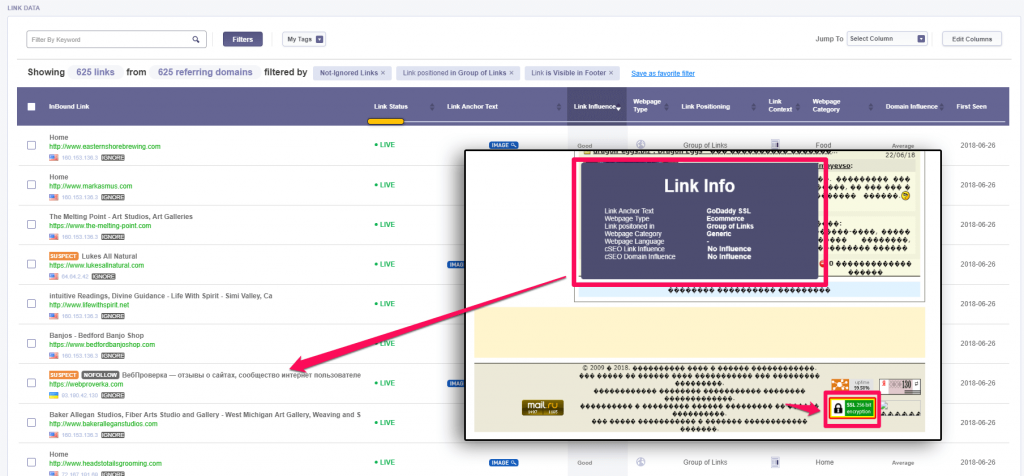
There are options when you can easily spot the links that came from footer sections or groups of links. In the cognitiveSEO tool, you have a deep-link analysis where you can spot the inconsistency. Take, for example, the screenshot below:

On the site used for this example (www.addictinggames.com) we saw they had lots of links coming from Blog Posts or Forum Threads, which might not be bad (depending on the intent). But the alarming situation starts when you look at the number of links coming from groups of links: 8,024, which is a lot.
All those links must be reviewed individually and disavowed quickly otherwise, I hear the penalization alarm.
After a quick research in Site Explorer, we saw that the site suffered a massive drop in rankings because they were penalized. Since then, they haven’t been able to regain their search visibility.
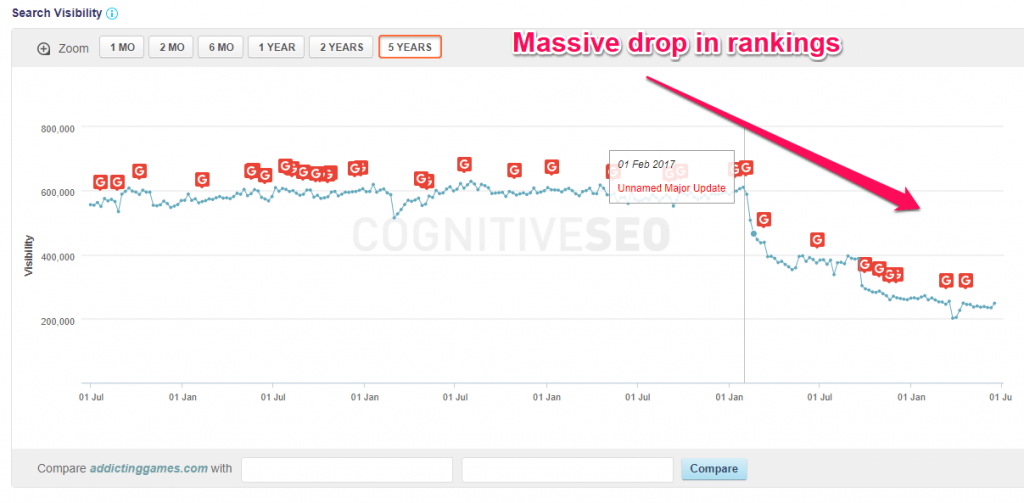
3. Blogrolls & Other Blocks of Links
Blogrolls were abused so much, that they tend to be very carefully analyzed by the Google algorithm nowadays.
This category includes both blogroll links and groups of links that do not fit into the blogroll pattern. Here is an example of a website that used to abuse the search engines and is not a blogroll. The domain uses widgets that are installed on various websites where webmasters get to place their link. Too many links that fit these patterns might be viewed as unnatural by the Google algorithm and you might get penalized for them. Some of those links can fall into the sitewide link category.
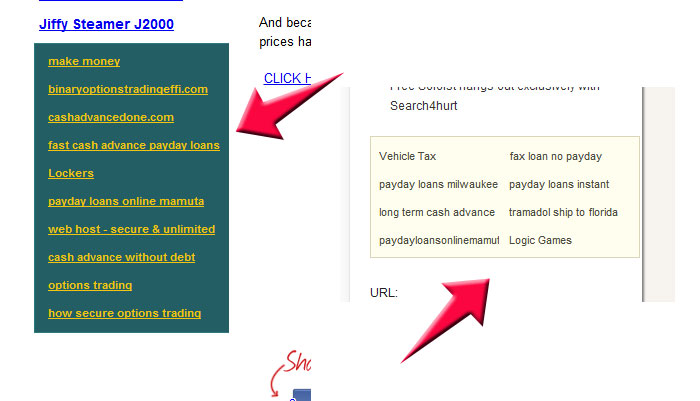
Make sure you don’t have advanced link widget networks listed as site-wides, as they might get flagged faster. Like all of the other types of links presented in this guide, it all comes down to how they were integrated into your link profile.
Health Plan to Quickly Identify Blogroll and Groups of Links
A couple of filters away, you will get another list of low-quality backlinks that might hurt your rankings. In our case, we got other 424 low-quality links.
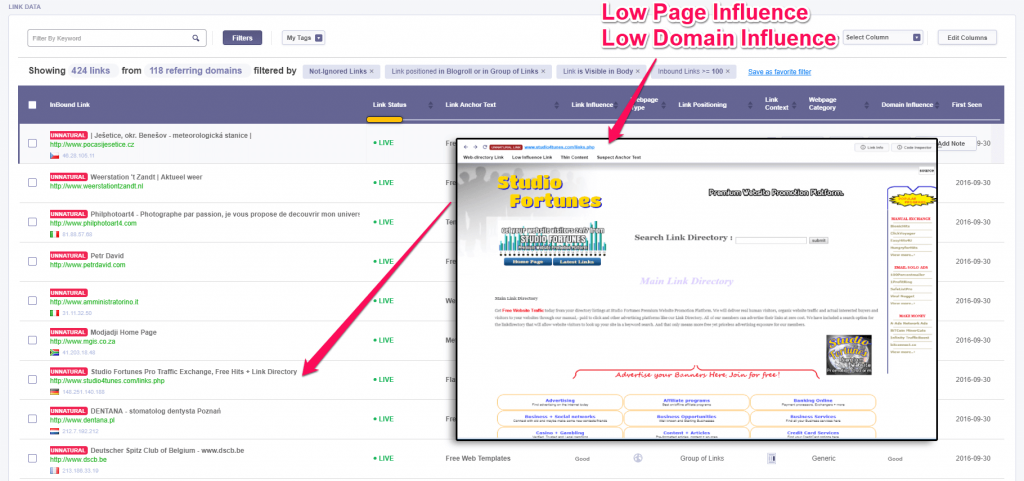
We analyzed that specific backlink in Site Explorer to see some metrics. We discovered that the page and domain had low influence carrying lots of links (47,365) coming from only 45 referring domains. That is a clear sign of unnatural links.
The problem was the website had lots of other unnatural issues and their backlinks profile was filled with spammy links. 88% of their whole links are unnatural.

If you find yourself in a similar situation, all the unnatural links must be disavowed and then you should immediately submit the disavow file to Google to cut the connection with that spammy links that can dreadfully bury your website.
4. Site-Wide Links
Site-wide links will definitely hurt your rankings.
Site-wide links are another example of toxic backlinks. They are old news on the Google landscape. Site-wides are devalued and can hurt your rankings so easy. If your domain does not have the necessary authority and receives a couple of site-wides from some low-quality sites, your site will get penalized by Google.
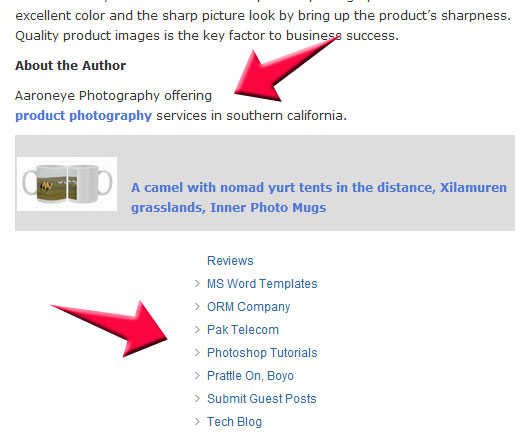
The idea behind the site-wide links is quite simple. It is more important to have more root domains link to your domain than to have many links coming from fewer root domains that link to your domain.
There are site-wide links that will not hurt your rankings, and it all depends on the site the site-wide is put on. If that site is considered an authority and that site-wide link is not correlated with other factors such as high link velocity, then that site-wide could help you.
Health Plan to Quickly Identify Site-Wide Links
Luckily, it’s quite easy to discover these type of links with cognitiveSEO as it’s a Sitewide Chart, dedicated to this matter.
You will get a chart with the distribution of sitewide links. If it is a high number, click on the pie and check those links individually. In our case, we got 21% of the whole backlink profile coming from sitewide links.
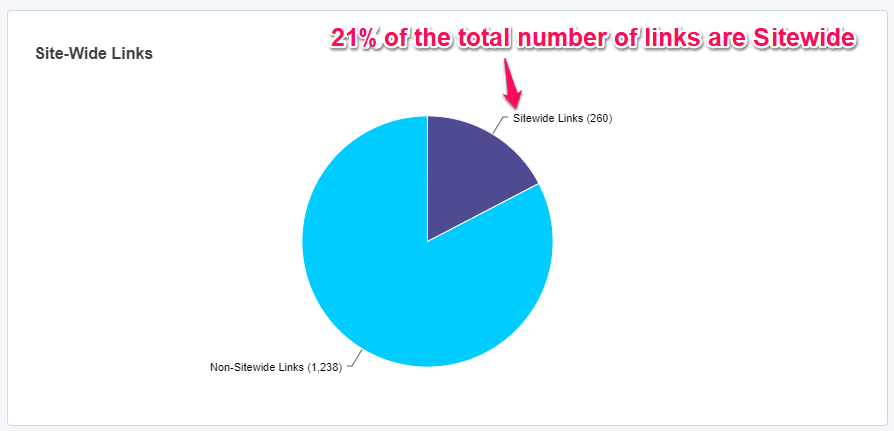
The website has lots of sitewide links that carry almost no value. Below you can see an example of a backlink for that website:
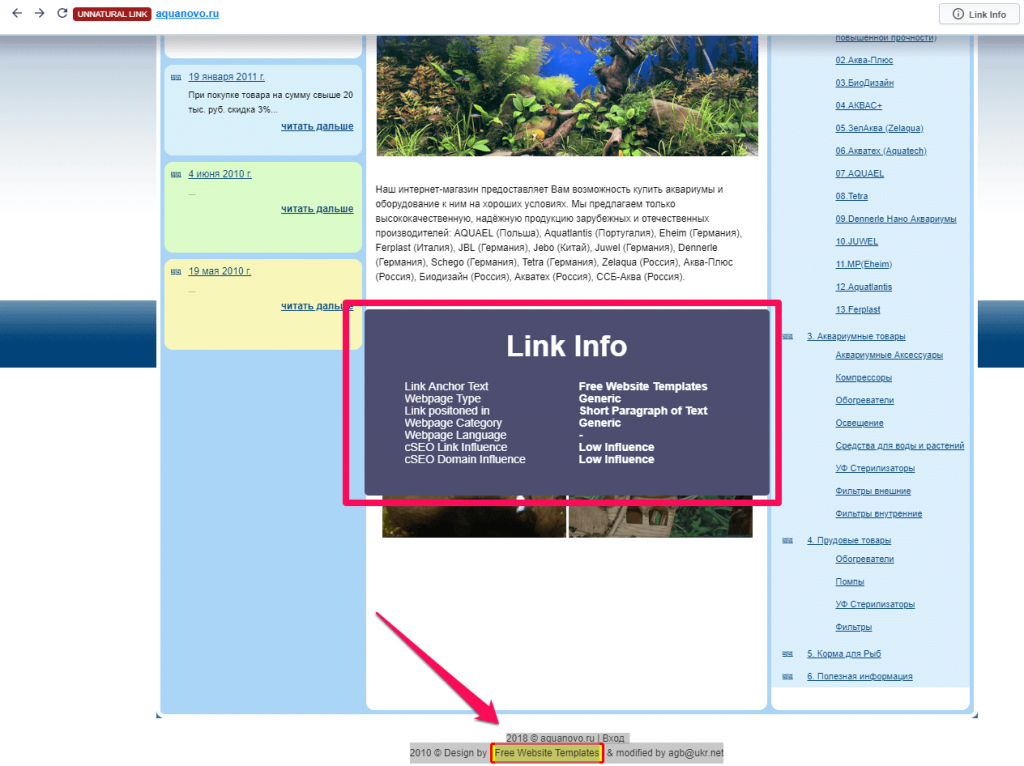
There are multiple problems with this link. Besides the fact it is sitewide, it is also hidden, written in white font. I had to highlight it to see the full text.
Note: A site-wide link is considered to be a link that is automatically replicated across a large number of pages from the same site. Do not missclassify a site-wide as 10 different links coming from 10 different articles on Techcrunch for example. Those are not considered site-wides. Our software has a built-in algorithm that matches different patterns and concludes whether a link is a TRUE SITE-WIDE or not.
5. Blog Comments
Blog comment spam evolved on the back of the search engines.
Comment spam is a form of spamdexing (keyword stuffing) and it has been around since the beginning of the internet. There are several tools that help the spammers post comments automatically with the final aim to reach higher rankings in the search engines. That is why most of the comments are marked as nofollow by the blogging platforms so that Google will not index them. Even so, spam commenting is a huge phenomenon and everyone that owns a blog knows how much comment spam they receive.
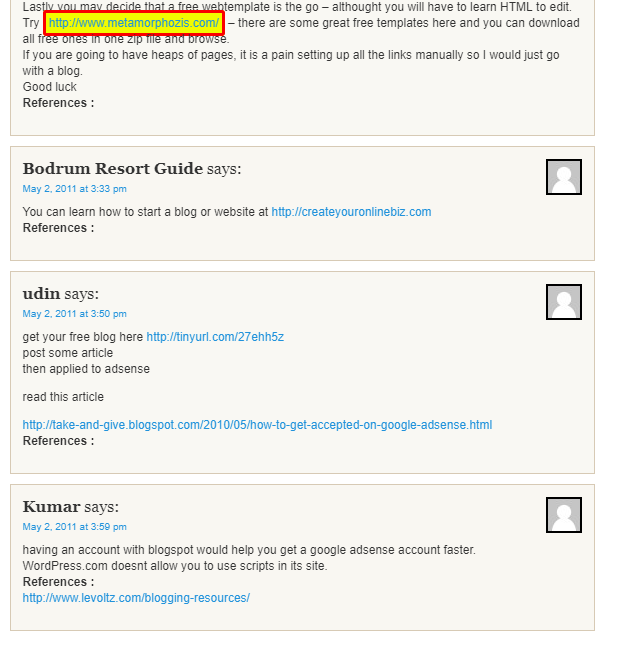
Health Plan to Quickly Identify Blog Comment Links
You can easily find both nofollow and dofollow links that are coming from blog comments.
For a quick review of the whole list of links that come from blog comments, you can go straight to the Link Positioning chart and click on the Blog Comment bar. We found a website that focused on building links through this technique:

We looked through their links and found out the website took advantage of this black-hat technique and left spammy blog comments on websites that weren’t even related to their website. Not to mention it used an anchor text that has a spammy appearance, considering the circumstances. The website is a free library of e-books and resources and the website they’re linking to is about website development. Not quite related, I might add.
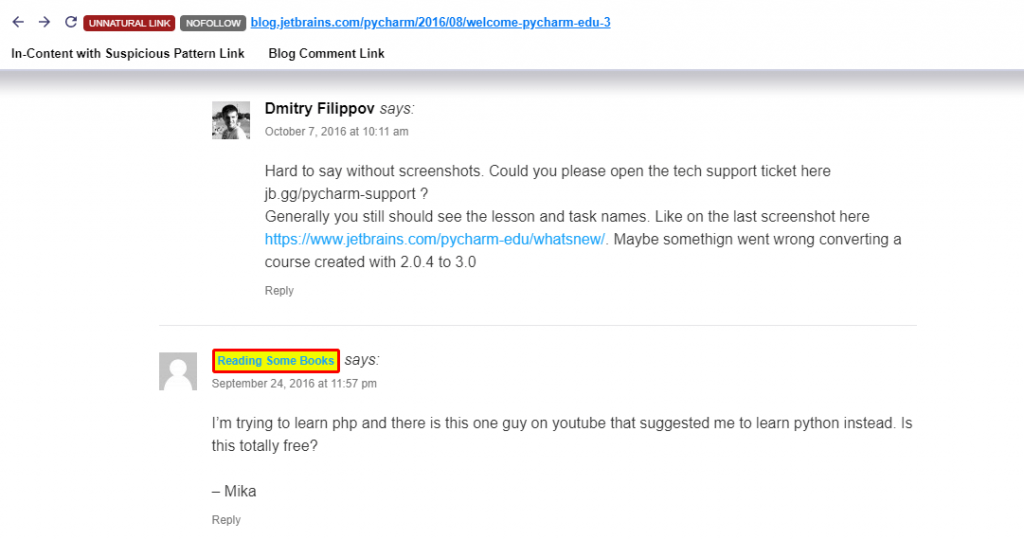
6. Forum Profile Links & Signatures
Forums are abused the same way blogs are.
Having people discuss around your site in forums is the most natural thing that can happen to a site. It means your site generated some buzz in its niche. But, if you are doing link building using fake forum profiles, signatures and posting content and links automatically on forums, this will appear in your backlink profile and could hurt your ranking when Google will flag it. These kinds of patterns can be easily identified by Google. Below is an example of an unnatural link that comes from a forum.
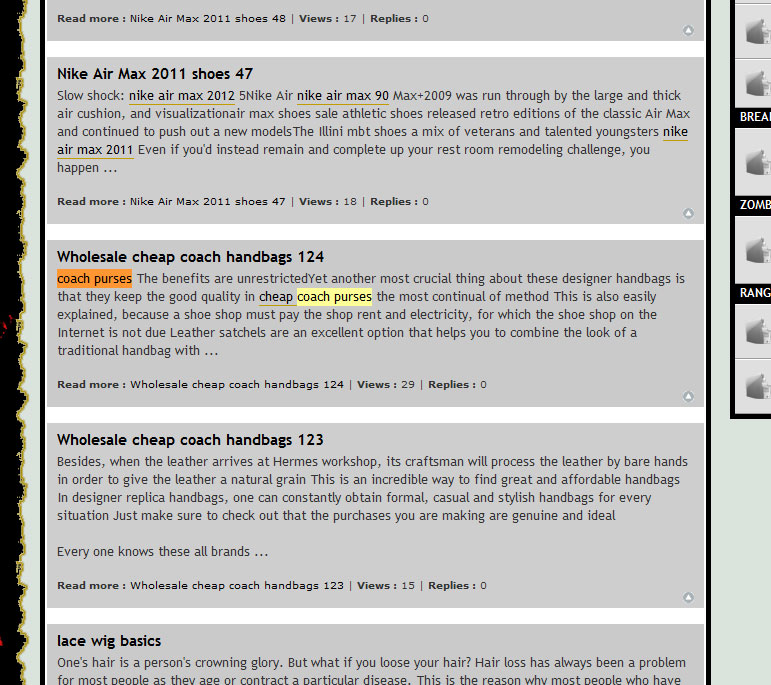
Health Plan to Quickly Identify Forum Links
Again, cognitiveSEO makes it easy to identify links coming from forum threads. If you want to check signatures and profiles, you should search for Link Position » Short Paragraph of Text, Group of Links. You’ll get a list of links as you can see in the next screenshot.
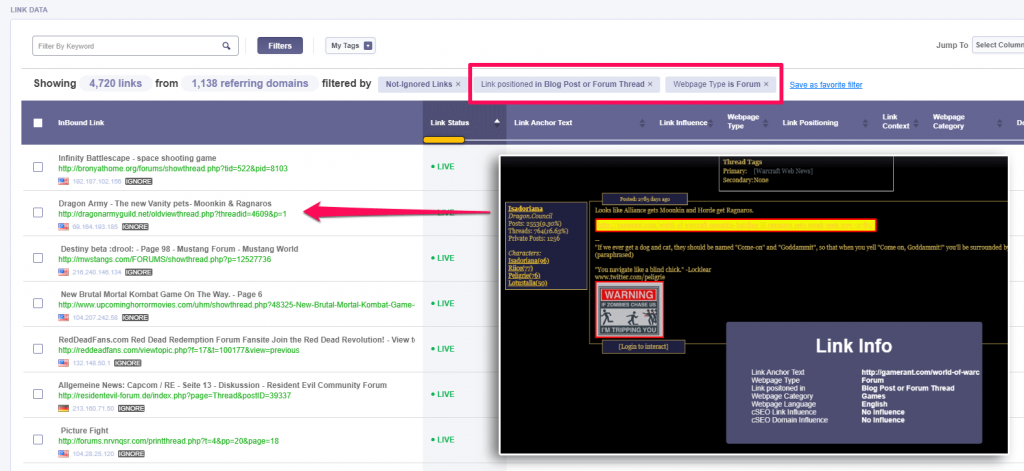
In our example, you can find a preview page with some link info. The link has no influence and nor does the domain.
In case you want a quick analysis, you go straight to the Link Positioning chart and review the links from the Blog Post or Forum Thread. The website we analyzed had a lot of links coming from this source. 15% of the whole backlink profile is coming from blog posts or forum threads.

7. Web Directory Links
Forget Web Directory submission services that promise hundreds of directory registrations.
Having too many links coming from web directories is not always a good sign. This might raise a flag to the Google algorithm. You do not need hundreds of directories to be listed on, only a few quality ones that are well known in your niche. If you have a high percentage of links coming from directory submissions (manually or automatically), that were created some time ago or are freshly added (it doesn’t matter), you will raise the link velocity flag, and get penalized.
An example of a web directory links you can see in the next screenshot. Basically, it is a list with a short description of brands, with a title and a link.
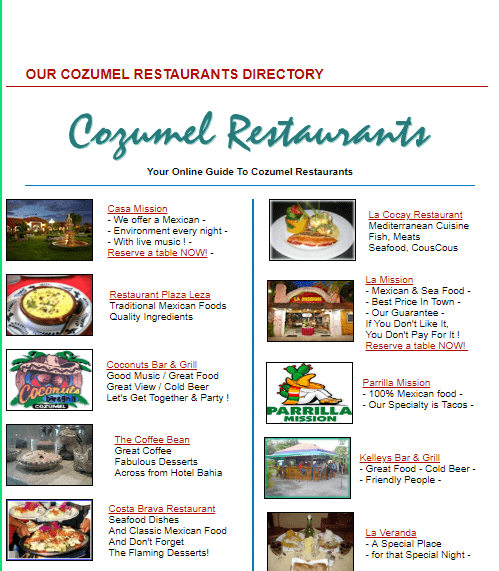
Health Plan to Quickly Identify Web Directory Links
If you get a long list and it represents a big percentage of your inbound link profile (similar to the next screenshot), then this might signal a problem that you need to investigate even further. cognitiveSEO monitors backlinks and evaluates the unnaturalness for the whole website by offering percentages for the unnatural links, suspect links and ok links, letting you know if you are in danger.

In case your website has lots of unnatural links and red areas (like the one above) you should use the disavow tool and cut the connection to your website from all the spammy links.
Out of curiosity we looked through the unnatural links and found lots and lots of links that came from spammy directories, filled with hundreds of outbound links, just like the one below. There you could see that the page had lots of other issues, such as low influence link, thin content, a high number of outbound links and so on. You should remove the link immediately.
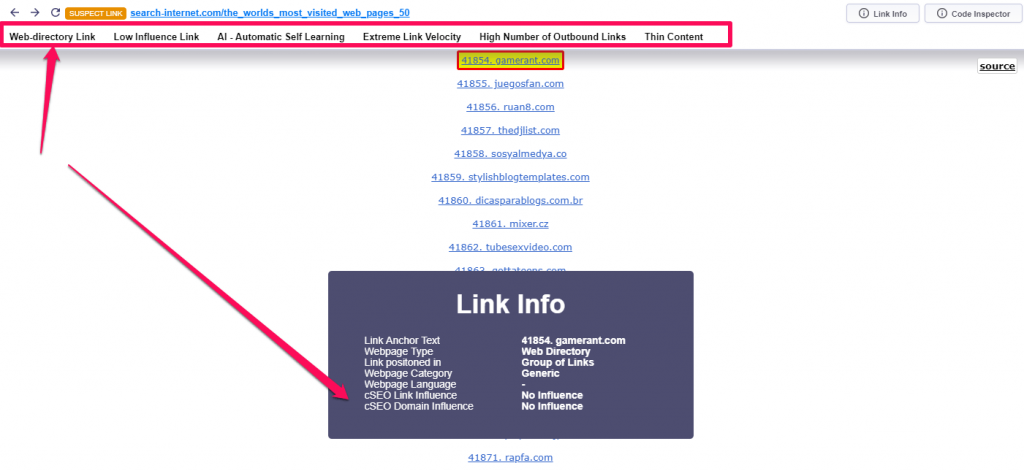
8. Article Directory Links
Avoid cheap content!
This is the best advice you could get. Having too many links from article directories is a sign that something unnatural is going on. Article directories and the sites they linked the most, were already hit by Panda in the last few years. Below is one way to find your article directory links so that you can further investigate them.
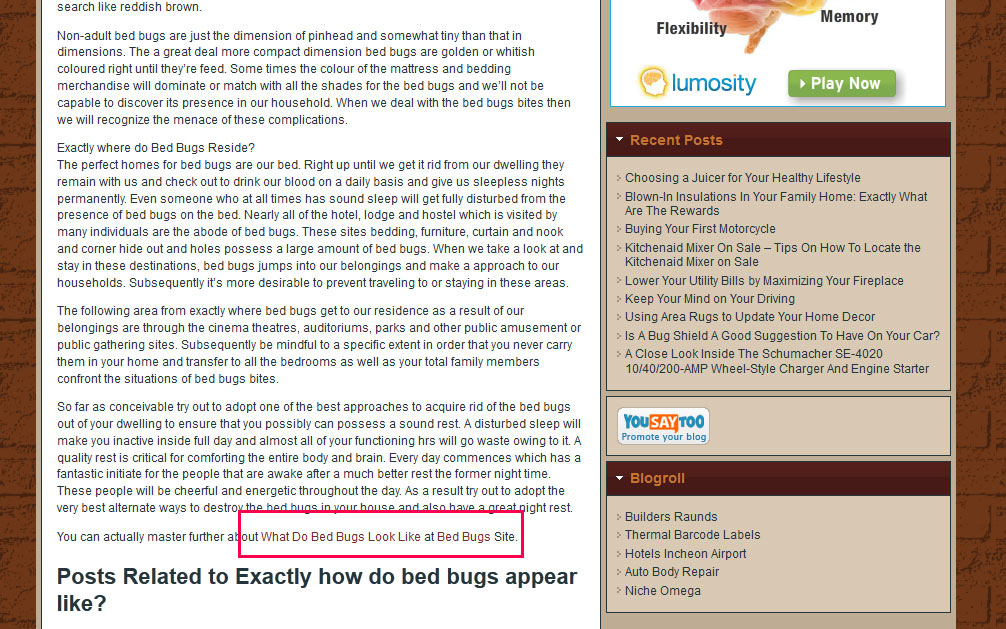
Article directories, if not created following qualitative guidelines, can be potentially harmful.
Health Plan to Quickly Identify Article Directory Links
Below you can see a print screen for the article directory links identify with our tool. We got 49% unnatural link profile out of their total unnatural links (23,594). Their total unnatural link profile is 87%.
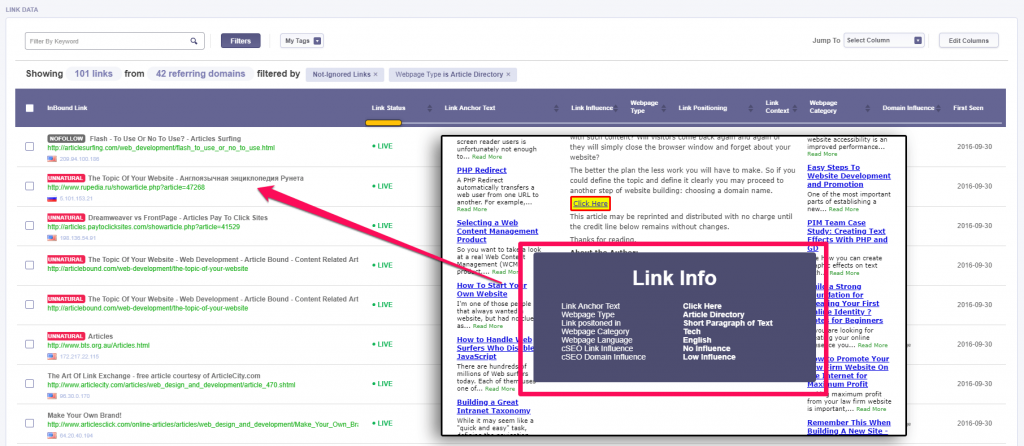
The website received multiple hits from Google algorithm updates. This was easy to spot in their search visibility. In the last 5 years, they were hit by lots of penalizations from Google.
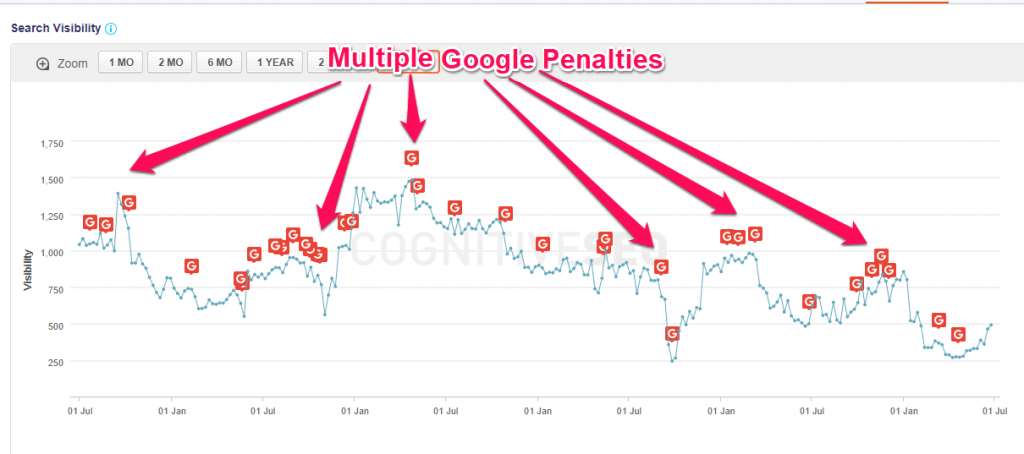
In cases like these, it is very important to disavow all the spammy links in bulk and clean the website. In 2018, a website shouldn’t have such toxic links. Try to monitor your backlinks to never find yourself in this situation.
9. Anchor Text Distribution
Over optimized anchor text does not look natural at all!
Anchor text is either:
- brand keywords (domain name keywords or the actual brand name);
- money keywords;
- navigational keywords (click here, website, source and so on).
In cognitiveSEO you can easily classify and review your anchor texts. You’ll get an analysis as you can see below. A natural distribution of anchor text would look like this.

An artificial anchor text distribution looks like this:
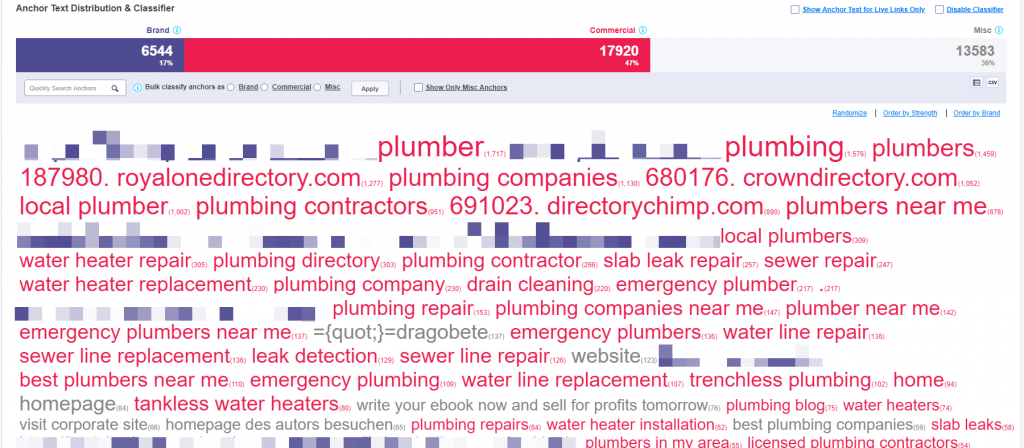
If your anchor text is over optimized, you are likely to be hit by Google because most of the times commercial anchor texts carry unnatural links. Consider a natural anchor text strategy, collaborate with other brands and influencers. Create valuable content and offer qualitative services to get recommendations and good links.
Conclusion
I hope all the SEO tips and the step by step guide will help you identify the potentially toxic links that generated problems with the Google penalties. Use the cognitiveSEO tool to investigate your link data and get a comprehensive link audit. The tool shows all the data in one place, and monitors backlinks side by side with your competition.
Don’t build links that can harm your website, even if they used to work. Now, they don’t anymore.
Use these tactics to identify bad links and remove them before Google takes action and penalizes your site. The sad part is that black hat is bad for everyone, and it is hurting the internet. Be good, create quality and Google will love you.

 Site Explorer
Site Explorer Keyword tool
Keyword tool Google Algorithm Changes
Google Algorithm Changes

Superb article and a must read for anyone who p-p-picked up a Penguin poop recently.
Nice write up that I found Eric Ward’s twitter. I don’t think the sitewides are a big deal if you use the nofollow attribute. I asked friend if he put his link on the site, it was sitewide, but simply stated that it has to be with the rel= “nofollow”, are you suggesting even with the nofollow this is not a good thing?
If it is nofollow, theoretically Google should not take those in consideration at all.
I dont think directory links have had any negative effect. One of my sites has had links build mostly through directory links – a mix of free directories, top paid directories and some highly specific niche directories. I’ve done enough to ensure a very wide diversity in my anchor text and my rankings have improved. I used a manual directory submission service and had my links built slowly over the last 6 months. Of course, I did also a few guest posts and built quality content so that also helped but I am not sure if directories are harmful because I have personally seen a site increase in rankings for the target anchor text I have built using those directories.
If your link profile is similar to your competitors (that are standing on the rankings for a long time) then it might be natural in your niche.
All of the above are different from niche to niche. In one niche is might be natural to have 75% of links coming from Footer links. In another it will ban you wright in the face. Quicker than you would imagine 😉
i agree with you in most of the cases above, but not entirely and i have some new rankings that confirm my words. I have made a campaign based on rented sitewide footer links for one of my clients and got up from page 2 at number 2 in rankings. So what i have noticed that really harm you is article directories , comments and maybe sitewide links on websites with more than 1000 pages.
Anyway very good resource this article
Again mind the wording. I never said Site-wides are 100% hurting your rankings.
“Site-wides are devalued and CAN hurt your rankings”.
Even gave an example about the vice-versa when they CAN help.
“The exception that confirms the rule. Of course there are site-wide links that will not hurt your rankings, and it all depends on the site the site-wide is put on.”
you have mentioned in a comment response above that nofollow links do not count. Sorry to absolutely disagree with you. I have experience with a few keyworkds got up only with no follow wiki links.
Hi Dan,
If you would take in consideration how I phrased the
sentence : “If it is nofollow, THEORETICALLY Google should not take those in consideration at all.”
I know it does take some of them in consideration and it has proven over time. But this is totally another discussion… with much more indepth analysis that could be done.
Hi,
Thanks for helping us but i read full article but i have a question now in 2018 what is the best link building way to rank any website.
Please meeting what types of links i need to build for website to rank them.
I am waiting for your reply.
Regards,
Opu
Gosh, given the apparent TOXIC nature of so many link types, I can’t help but think starting over with new domains may more more sense. The futility of trying to ‘fix the past’ could be an absolute waste of time – and a time pit. Once placed, many of them are NOT removable, so don’t even try.
Backlink profiles do tend to deteriorate over time – as low-ball sites, bookmarks, directories, etc. come and go – some of the lowest links will fade out of the link graph. Over time that might help some (eventually) clear some flags that may be holding a site down, but who knows?
Thanks, this is the most informative/in-depth post I’ve found about the Google Penguin Update.
Our web development site got hit due to the “Powered By” type links in the footer of the Templates we created. Based of the on the info in the post I’ve come up with the following strategy to deal with this;
We will make all “Powered By” links that are not on the home page “nofollow”, thus reducing the amount of incoming links from footers.
We will change up the anchor text every 3 or 4 sites.
We will change make links from low quality/ranking sites will be 100% “nofollow”.
Wish me luck, Pizza and coffee…. This is gona be a lot of hard work!
Hi, I’m so glad to read this article,updating Google penguin, specially in SEO and link building. Please provide me a different tools to determine a good links for my forum and blogs.
Thanks Melanie
WOW, great article! You really provided actionable info about over optimization, so thank you. Most of these types of articles around are just rehashed bs without data behind them.
I just signed up for Cognitive SEO and I’m EXTREMELY impressed.
Hi Ian,
Glad you liked it. Send us any questions you might have about the platform 😉
Razvan
Hi, Very good and valuable information, but i am still confusing about the link building methods, Can you please let me know which one is the best method for getting quality links. We can not do Articles, forums, PR etc.. Then what can be done….
Great article. This is the first time I’ve came across a blog that talks about identifying low quality links. Thanks!
Excellent read! Thanks a lot! I faced a serious two-month Google dance for one of my sites due to site wide links from different blogs…
url bookmarked! cheers!
Great article. So I guess having my URL in this comment isn’t helping!?
I’ve always considered cleaning up my backlink profile as I know some of my competitors rank really well with just a small handful of quality links (compared to my enormous list of low quality ones) but disavowing links seems beyond me.
Can anyone recommend a company who can do this for me?
Thanks in advance
Matt 🙂
Great overview to highlight the bad types of links that people should be aware of (and avoid) with any brands they work with. Thanks Razvan!
Spammy links can be anything from thousands of links created by an automated spam software, blog comments, negative SEO, or if you have just built too many links that have the same anchor text that could technically be classed as spammy links.
This is one of the things that I would strongly suggest if you have spammy links. Imagine the site comes to us with a review and we see there has a bunch of spammy links. There is a reason why we did not change in the rankings and that is because Google’s smart enough to know that we did not build these links. We do white hat link building. Why would we build 300 links with the exact same, exact match anchors all at once? Google is smart enough to know that it was not us. As a result, we were not harmed in the rankings. If we were, it’d be a very simple fix. All we would do is take the domains from Ahrefs and we would go into search console.
Honestly, This is what I’ve long to see.
Mostly Google is messing around with my links.
Glad to be on your blog,
Cheers
But no backinks are showing in my webmaster tool. In old google webmaster version, the backlinks of my site was around 5000 but now its showing no backlinks. Can you please help me.
Hi Rajvan,
How much time it will take to see results after removing bad link. i have removed some bad link a week before but have’t seen any positive results yet.
regards
Hi Jhon
Do your ranks recovery? My website is also punished by google and no ranking at all, I want to remove bad links, but still nervous about how much time it needed to recovery. My friend and I spent about 2 years to build the website but it is almost destroyed in just about two weeks.
Great information of backlinks… I am sure this will help to improve the ranking of a website.
Thank You!
Cheers
Thanks for this great post. I got 2 questions in my mind. 1. Do you think we should also consider removing PBNs in Tier-1?
2. Do you also suggest cleaning up our tier-1 with the help of your post above? Please help! Thanks
Recently i created backlinks for my latest blog post. but after 3-4 days google kick my post (already ranked), what should i do now ! (i already disavow few bad backlinks)
Brilliant Post. I was so worried about all the bad backlinks and botlinks. And was not able to find a solution to it. But your post has helped me a lot. Have requested webmasters to remove the bad backlinks. Hope to get rid of them soon. Thanks
Finally some quality information on this topic. I am having a nightmare with these Bad backlinks on my money site. It really pissed me off!!! I hope your tips can help me solve this problem. I wonder if there is any way we may stop getting these bad backlinks on our site?
Thank you for giving us such a thorough guide. Luckily my site is young, but I do have some spammy links from some fiverr blog commenting gigs gone wrong. I hope to clear them up. How can I remove the link if I am unable to contact the webmaster? Is disavowing the link enough on it’s own?
Hi, Ryhan!
If you cannot contact the webmasters in any way, you can disavow the links; use the cognitiveSEO unnatural link detection as it does most of the job for you when it comes to disavowing 😉
Hi @Razvan!
Nice article. What do you think about in-Content Link placement position? Do you think if link in the lower part of the article is less powerful than in first paragraph? I’m also confused, if we get links from a 3rd party self hosted platforms like Wix website/blog, will it be considered as spam?
Thanks
Hello! Removing spammy back links help to reduce the site spam score??
Thanks bro , there are too many jealous companions who is linking my website to bad websites. Now i can take an action
@Razvan, We have BIG problems.
We are the target of black hat and attack with spammy link building with 99% being from porno websites out of Russia starting in Late Jan, early Feb. of this year. In addition, they are using porno specific keywords as titles to the links back to us.
A. Google Disavows for the domains are not working, we are now on round two of Disawvows with Google but unfortunately, we have gone from 1st-page placement on many keywords for our industry for art supplies, too far less or 2nd and 3rd-page placement.
B. We have found no way to get rid of the associate link title text from taking over our reports showing most target words.
1. Should we keep submitting the same list with all new additions for Domains to disavow?
2. How often can you submit or even know if Google is working on removal?
3. There is no information on how to get rid of those nasty words associated with the links back to us. Or are they automatically removed when Google Disavows the domains associated with them?
Most importantly, what else can we do? After working on this for months we are now at the start of our busy season and traffic and orders are way down. Organic traffic has been good to us in the past and now, we are worried we will take a major hit on far fewer orders.
Help!
Hi,
Sorry to hear about that. From what you’re telling me it seems that somebody is doing negative SEO, might be a competitor or somebody else that wants to harm your website and business.
Regarding your questions, you can keep submitting files to Google for disavowing. I think that you send the file once at several months, but that really depends on how many links you get from those websites.
Another suggestion would be, if possible, to send emails to those websites to remove the links.
Or you could block those IPs form Russia. It is one is more complicated and might not be so efficient.
Hope you’ll get back your ranks. All the best!
Hello Andreea, Yes it is a competitor doing this to intentionally to essentially have Google Penguin take us out of the rankings and/or band our website. As a small business, we have no legal protection or assistance because it would require getting IPs numbers from Internet Service providers thru court orders and only extremely large companies, that can prove millions of dollars or losses, are able to get assistance thru the FBI or FCC. I’m afraid your answers are too generic to be effective against these black hat techniques. Please look to your internal staff with deeper knowledge on Black Hat SEO to either put us in contact or get help with answering our questions. Let me reword the questions: 1. When submitting Disavow files to Google does the submission overwrite the previous submission, making it lost, or is it a new separate file? If yes, it is treated as a new file, then how long should we wait until submitting a new list? If no, it overwrites and makes the previous submission lost, then should our list be cumulative of previous submissions until we no longer see them in backlink reports? 2. Is there a specific way to submit to disavow to get the anchor text (keywords, in this case, porn-related) to be removed from our google reports and not be associated with our domain name. Or does the removal of the Domain thru the disavow or the “exact” URL link automatically remove these anchor text titles automatically drop off? Or is there a different method that must be done to get Google to remove these words from being associated with our website? 3. It is not possible to block IP’s using a templated website thru a major e-commerce website provider. We are NOT in control of the servers. The only way we are aware of is to use a service like Cloudflare to Block at an IP level BUT…this comes at a high price to website response, longer load/lag times, and creates a redundant CDN replication, cached copies of our website thru-out servers around the world as the current (very well known eCommerce hosting service) already uses a CDN network. No offense but hoping to get our ranks back is not enough. Please talk with your colleges that are knowledgable on Black Hat issues or provide us other contact recommendations. Feel free to email us directly and not post and referrals as to offer them privacy. Thank you.
because google doesn’t talk directly to me about my link profiles on the console? on the search console i mean because i don’t have any camouflaged links and don’t believe i have spam on my outgoing links, does your tool guarantee me this? Well by the way excellent article.
Hi
Thank you for all your amazing information. I just want to ask you a question. What makes a bad link bad? Some links are listed as toxic and dangerous for my ranking on semrush but 100% safe on majestic seo. Even within Semrush, i have few accounts. In one of the account i have a particular link listed as toxic while in a different account when you use the link idea tool, this toxic link is highly recommended for linking by the same program.
So who decides what link is bad?
Many thanks
My website is also punished by google and has no ranking at all now, I want to remove bad links, but still nervous about how much time it needed to recovery. My friend and I spent about 2 years to build the website but it is almost destroyed in just about two weeks.
How to remove dead and spam backlink. I submitted the .txt of the tools to Google Disavow, but it was 6 months but the backlinks were not removed.
Thank you for this informative article. Btw i have one question.
According to MOZ, My website is having 13% linking domain with spam score of 60-90% & 25% with spam score of 31-60. I was getting more than 30-40 link from a spammy website having spam score of 90%. I checked that website and it was not live. I manually contacted some of the spammy website owner to delete the link of my website from there and mostly have done it, Still moz shows the same percentage of spam as it was before. What should i do? Is those bad link deleted or still there. Plz help.
Thank You!
I have a Hindi website and I don’t know how to remove bad links from my site from google. please anyone help me.
i agree with you in most of the cases above, but not entirely and i have some new rankings that confirm my words.
Thanks for sharing !